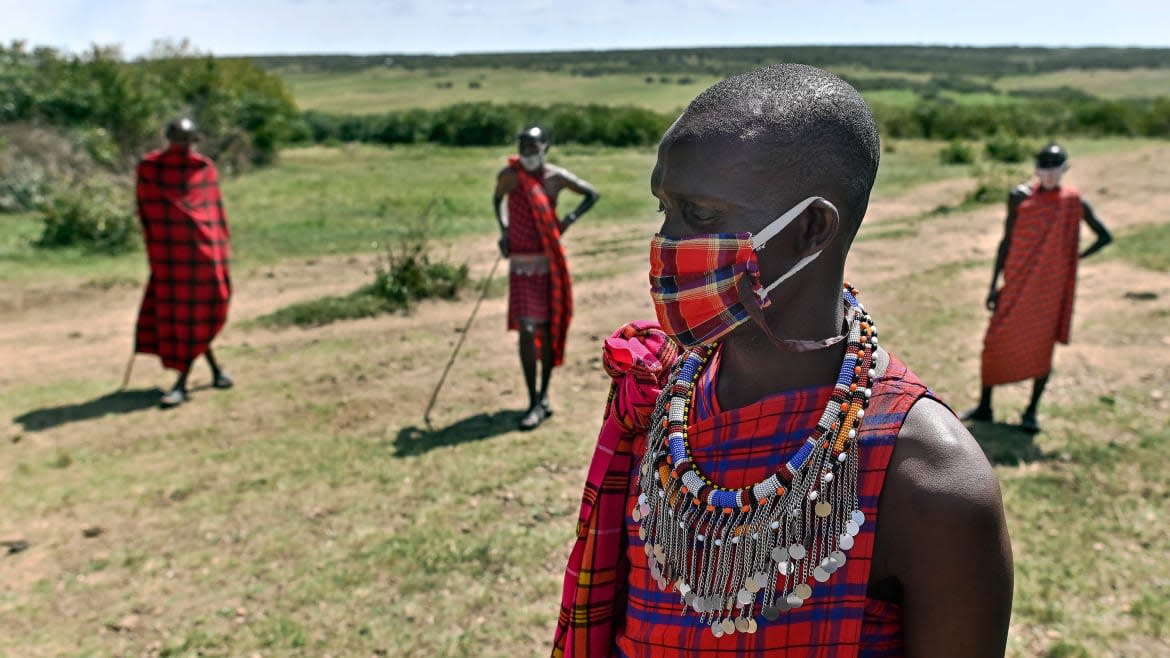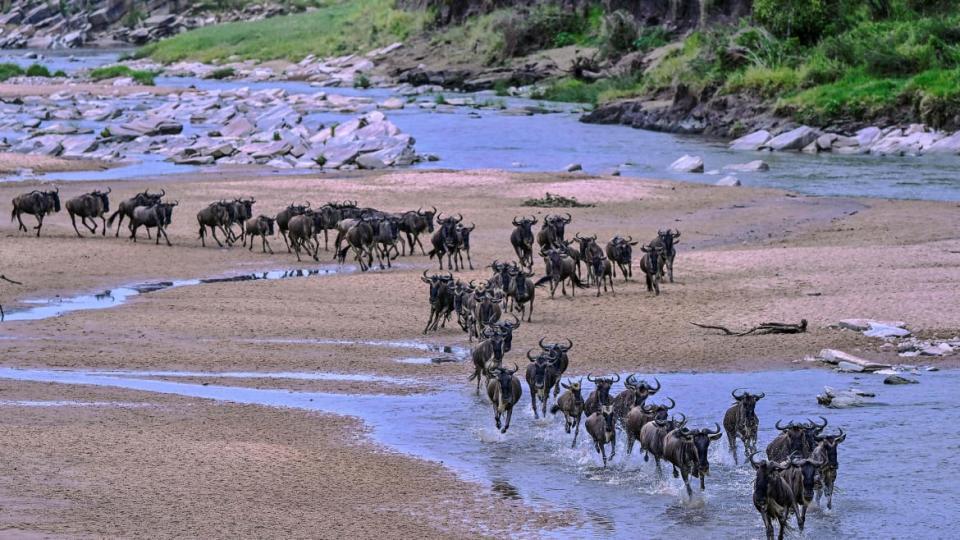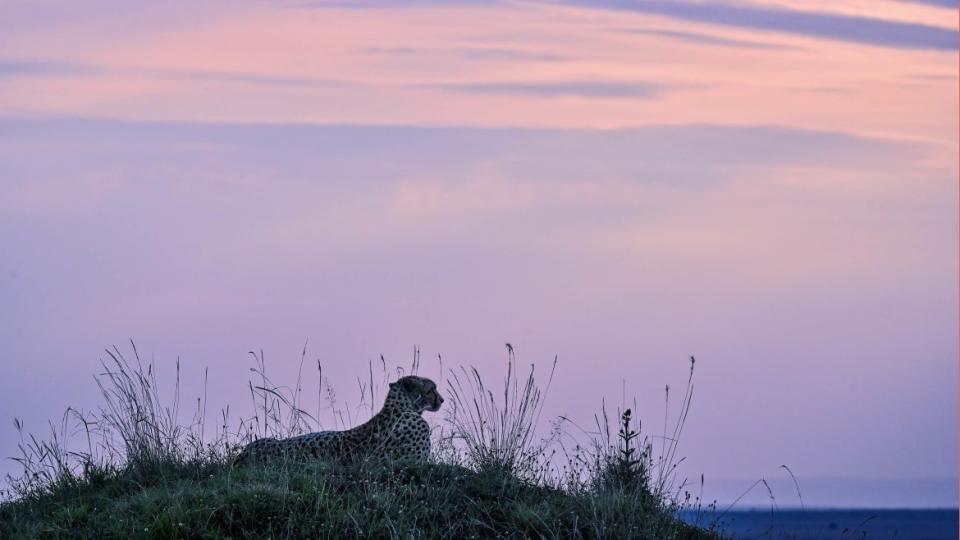Here’s What It’s Like Visiting Kenya Right Now

Along the Mara River, where tourists watch as wildebeest and zebras famously pound across gushing waters during the Great Migration, there’s not a car in sight. Even outside of migration season (July to October), the Masai Mara National Reserve is usually crowded with safari vehicles. But this year, the animals have had the grassy plains almost to themselves.
I hadn’t intended on traveling to the Mara during COVID. A trip to Kenya during a pandemic–are you crazy? How irresponsible! But when South Africa (where I’m from and was traveling to) announced it wasn’t allowing people in from high-risk countries, I made a plan to spend 10 days quarantining in a low-risk country before entering my homeland.
The idea of spending two weeks in Kenya right now gave me serious pause. I was conflicted about moving around unnecessarily–especially in a country that appears to have COVID under (reasonable) control.
That said, Kenya has displayed eagerness to regain travelers, as tourism is one of the primary employers of its 51 million people. In the Mara Conservancies (part of the greater Mara ecosystem), the livelihoods of an estimated 100, 000 people are supported by tourism (according to Conservation International). With safari tourism on hold for the past few months, there have been major job losses and a slight increase in poaching (mostly bush meat for consumption), so there’s no denying COVID’s gargantuan impact on the economy. In an attempt to remedy this, the country reopened its borders to the U.S. on Aug. 1 and Kenya Airways relaunched its direct flight between JFK and Jomo Kenyatta on Nov. 29.
Before booking anything, I needed to get a better understanding of what was happening on the ground, so I enlisted the expertise of Deeper Africa, which has a clued-up Nairobi office. Ironing out intricate details like internal flights and the ever-changing landscape of COVID protocols is a minefield right now, so working with an expert is more relevant than ever. In hindsight, it was a very good idea, as curfews are in place, not all camps are open and some flights are not operating regularly. The pre-trip intel was vital and as soon my rational side kicked in (am I being irresponsible?), Deeper Africa’s Nairobi-based team was quick to share updates from the country.
The U.S. team also assisted me with much-needed pre-fly intel. Prior to traveling, I was required to have a negative PCR test (not a rapid test) 96 hours before arrival in Kenya, which is confusing because it doesn’t state when the test expires. (Tip: Many sites list different timing information, so call your airline to confirm). I also had to complete a health document online, which I presented in the form of a QR code on arrival.
Arriving at Jomo Kenyatta was seamless–a temperature check and presentation of the negative COVID test and health form, along with my passport, was all I needed. At arrivals I was collected by the Deeper Africa Nairobi team and we breezed through a usually congested Nairobi at 11 p.m. because Kenya (at the time of writing this) has a 10 p.m. curfew. (Tip: If you’re on the roads after 10 p.m. you need a document, which the team organized. Although we weren’t pulled over).
Other than the lack of traffic during curfew, Nairobi is still Nairobi, but with masks. Under usual circumstances I would have spent more time in Nairobi, but staying in a densely populated urban environment for longer than I needed to felt unnecessary.
I overnighted at both the Social House, a cool new hotel in Lavington with four restaurants to choose from (so getting back to your room before curfew isn’t a concern), and Hemingways, a luxe hotel reasonably close to the airport that has private suites (so you needn’t come into contact with many people). Both hotels were at a low capacity and sanitizing, temperature zaps etc. were all in place.

Wildebeests run across a sandy riverbed of the Sand River as they arrive into Kenya's Maasai Mara National Reserve from Tanzania's Serengeti National Park during the start of the annual migration July 18, 2020.
Beyond Nairobi, Kenya’s expansive wilderness areas mean social distancing comes naturally, especially when riding in the back of an open-air vehicle.
Getting to these more remote parts usually requires a quick flight (SafariLink has a strict surgical mask policy), but the planes are mostly empty. So are the lodges. At Saruni Samburu, on a private conservancy next to the Samburu National Reserve, there were a handful of domestic and international tourists (mostly U.S.) and at Saruni Rhino, a much smaller property in the nearby Sera Conservancy, we were the only guests. Down in the Mara, one of the most sought-after properties in the country, Angama Mara, is only operating one of their two camps.
I felt conflicted about traveling in Kenya, but a morning spent at Reteti Elephant Sanctuary, a community-founded project that cares for abandoned elephant calves and relies heavily on donors and visitors for expensive upkeep (you pay a small fee to visit), was some of the proof I needed.
Most African countries have managed to get a better handle on COVID and many of the people I came into socially distanced contact with were regularly tested. (I was tested at Angama Mara, which was utterly seamless). Despite the lack of tourists, at no point did it feel uncomfortable or eerie. Enjoying a dawa (gin, honey, lime cocktail) on Angama’s expansive deck that overlooks the entire Mara was sublime, especially after weeks spent circling a small apartment. And the jubilant staff created a much-craved buzzy vibe–every waiter, manager and guide was genuinely delighted to finally have tourists back after a devastating few months. “Oh you’re bringing joy to my life!” joked my guide at Angama Mara, when I told him I’d spread the news of my positive experience in Kenya.
In a place where tourism employs so many people, tourists are indeed a welcome sight. The hope is that jobs will soon be restored (many lodges had to let go of staff, although this was not the case at Angama Mara nor Saruni) and those who took pay cuts will once again receive a full salary.
From the moment I began considering this journey, I made a conscious effort to focus on places that rely deeply on tourism, where community and conservation efforts are strong and local people are employed. Which isn’t hard in a place like Kenya. At Saruni Rhino, there’s a hefty $175 conservancy fee that ultimately goes back to the community and wildlife conservation, and all the staff come from nearby villages. At Angama Mara, the majority of staff are from surrounding areas and guests contribute a nightly amount to the Angama Foundation that supports neighboring communities, the Mara Conservancies and NGOs. There’s also the option of booking a private house like Mara Bush Houses, Segera House, Karafu House or Arajiju (U.S. tourists are allowed in for up to 30 days) to limit your movement.

A young Cheetah male rests on a mound at dusk after feeding on the carcass of a Topi antelope that his coalition of four brothers managed to hunt and bring down on the plains of the Masai Mara National Reserve where the spectacular annual migration of Wildebesst into Kenya from Tanzania is started on July 16, 2020.
At most lodges, tourism dollars go a very, very long way.
If you’re still mulling over whether to travel to Kenya right now, here’s what I can tell from my experience, as well as chatting to numerous people in the industry and on the ground: Injecting your money into the right places in Kenya will have a profound impact on those who need it most. My suggestion for those eager to travel is to do it responsibly, follow the country’s protocols strictly, and make it truly mean something.
Get our top stories in your inbox every day. Sign up now!
Daily Beast Membership: Beast Inside goes deeper on the stories that matter to you. Learn more.

